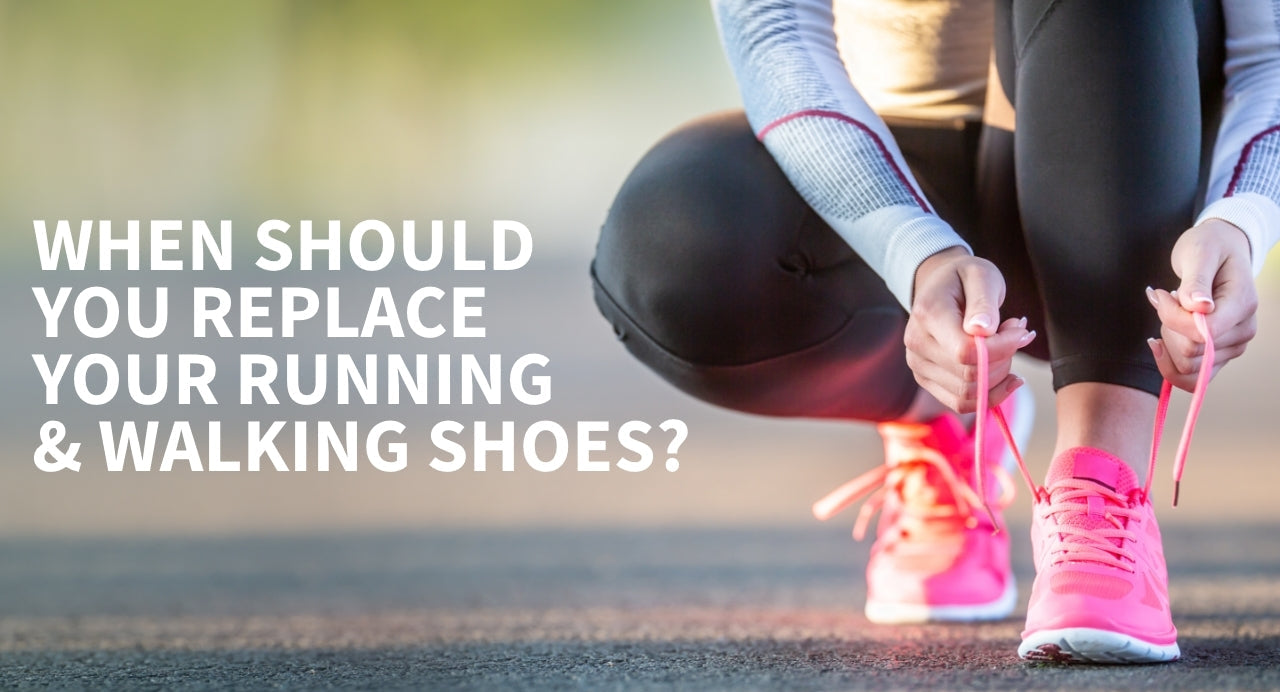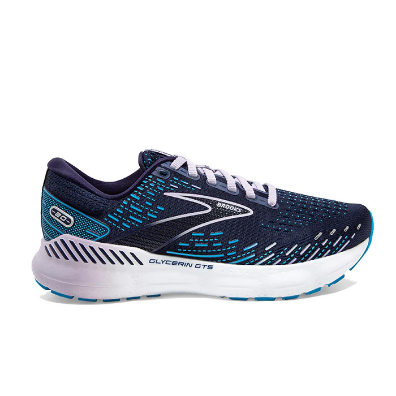free foot analysis
When Should I Replace My Running or Walking Shoes?
Choosing the right running shoes can feel like an endless journey. So once you find a comfortable pair of running shoes or walking shoes, it is extremely hard to part ways. Rule of thumb is most running shoes last between 300 to 500 miles and should be replaced every three to six months. So, is it time to replace my running or walking shoes?
If your exercise routine consists of walking 30 minutes a day, or an average of 3 to 4 hours a week, consider replacing your shoes every six months. If you are walking 60 minutes a day or an average of 7 hours a week, consider replacing your shoes every three months. After three to six months, shoes lose support and shock absorption, which may leave you prone to and increase risk of injury (shin splints, tendonitis, stress fractures, etc.).
Signs That It’s Time to Replace Your Shoes
Many people wait way too long before they decide to retire their shoes and by the time they do, they are worn out. It is recommended to examine your shoes when they have reached their first three months of usage.
When examining your shoes, ignore the mud and dirt. This just means you have been using your shoes. However, you should be concerned with the shoe’s general tear and wear. As you examine your shoes, look for wear patterns and signs of wear such as:
- Worn-out soles on pressure points.
- Stretched out heels or worn more one side than the other.
- Molded foot imprints in the insole of the shoe.
- Display noticeable creasing in the side or bottom of the sole.
- Uppers are broken down around the ankle.
- Shows signs of unevenness when placed on a flat surface.
- Sole Deterioration.
- Upper Material Breakdown
- Loss of Cushioning
Don’t ignore any of these signs, as they are all signs of excessive wear. But also keep in mind; a shoe’s lifespan can vary depending on the shoe quality, shoe type, the shoe usage, surfaces on which shoes are used on, and our body weight. Not all shoes are created equal, so shoes with an EVA midsole tend to wear down faster than shoes with a polyurethane midsole. Running on pavement wears down shoes faster than a track, a trail or gravel. A heavy runner will usually wear down their shoes faster than a lighter runner.
How should I know if it’s time to replace my running or walking shoes?
Once your shoes are close to their end, your body may react negatively. Apart from the general wear and tear, once you notice foot pain, knee pain, pain in your legs, hip and/or back, it may be time to replace running shoes or walking shoes. However, those who continue to wear their worn-out shoes despite feeling pain, and the lack of cushioning and support, become vulnerable to injury. If you still doubt replacing your shoes, here are two tests you may take:
Press test
Have you noticed your shoes are no longer cushioned? To determine if your shoes have lost their cushioning and worn out their midsoles, perform the press test. With your thumb press into the midsole and if you notice the midsole feels tough and compresses less with pressure, then it may be time to retire your shoes.
Flexibility test
If you have noticed your shoes are no longer cushioning, take the flexibility test. Hold your walking or running shoe upright and bend the toe of the shoes back towards the heel. If you notice your shoe folding easily, it’s time to replace your shoes.
After I replace my running or walking shoes, how can I expand my new shoe’s life?
First, congratulations for all your hard work! After you replace your running shoes or walking shoes, here are few tips we can give you to help expand the life of your new shoes:
Rotate between two pairs of shoes
It’s a good idea to have a minimum of two pairs of running shoes or walking shoes that you can alternate. You’ll find they’ll last much longer in the long run.
Remove your shoes properly
Get in the habit of unlacing your shoes and removing them with your hands, rather than kicking them off our feet. By removing your shoes properly, you’ll notice, they will last longer.
Save your shoes only for exercise
Don’t wear them all day; slip into them only for your exercise time. If you keep them on your feet, they get more wear and they have longer exposure to foot moisture and bacteria, which will break them down faster. So, save your running or walking shoes for exercise. Only try not to wear them around town, as they will wear down faster.
Air out your shoes between uses
Store your running or walking shoes in an area where they are exposed to air so they can fully dry out between uses. Leaving your shoes in a gym bag is not a good idea.
Running shoes and walking shoes recommendations:
Frequently Asked Questions
How long do running shoes last?
Running shoes last between 300 and 500 miles - about four to six months for someone who covers 20 miles per week.
Do I need to go through the fitting process every time?
It's not required, but it never hurts! Particularly if there have been any changes for you since the last pair. Plus, it's free!
Can I use my running shoes for other activities?
Yes! Running shoes are built to support your body's natural forward motion so things like walking or hiking are good options. They're not recommended for activities like basketball because they are not designed to support lateral, side to side motion.
Can I put my shoes in the washing machine?
It can be tempting to throw your shoes into the washing machine after a hard run, but for the longevity of your shoes (and your machine), we recommend washing your running shoes by hand.
Where to buy running shoes and walking shoes near me?
If you prefer to try-on your next pair of shoes, we have nine Lucky Feet Shoes comfort shoe stores in Southern California. Which are located in Anaheim Hills, Rancho Cucamonga, Riverside, San Dimas, Long Beach, Temecula, Redlands, Upland and Palm Desert. We invite you to stop by for a free foot analysis and try on our top running or walking shoes. In addition, we have a large selection of comfort shoes, wide shoes, arch support, and custom orthotics! Don't let foot problems keep you from your walking or running routine!

Jerick Sobie
Since 2005, I have been a dedicated small business owner specializing in footwear retail. With over 20 years of experience, my business partner and I have helped customers find the perfect shoes that combine style, comfort, and quality. Our expertise extends beyond local sourcing—we have traveled internationally to discover high-quality footwear that meets our customers’ needs. In addition to running my business, I have participated in numerous health fairs and educational seminars, sharing my knowledge on proper footwear and foot health. Committed to providing exceptional service, We carefully curate our selections to ensure the best fit and support for every customer.



















































































